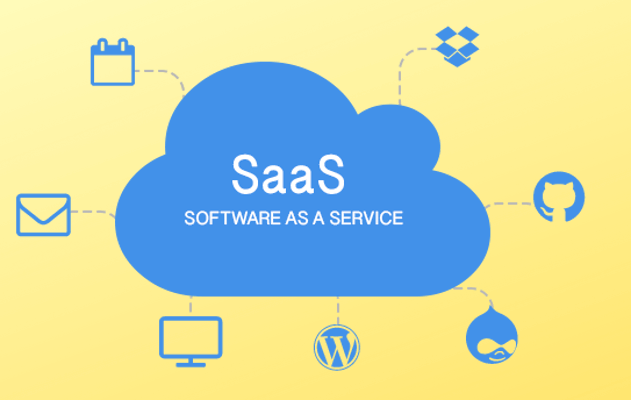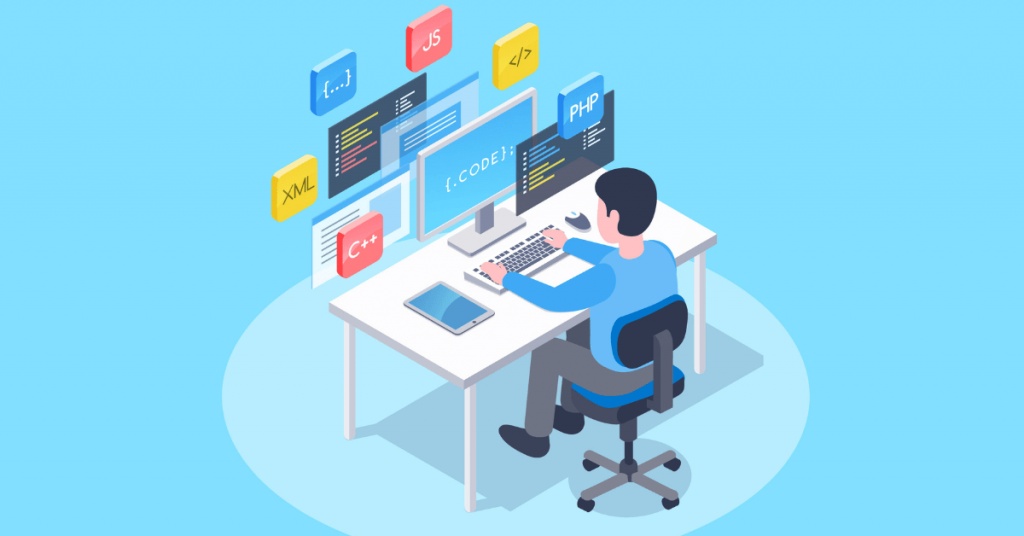Have you ever heard of Software as a Service (SaaS)? If you’re not familiar with the term, don’t worry. SaaS is a cloud-based software delivery model that has been gaining popularity in recent years. In simple terms, it means that instead of installing software on your computer or server, you can access it through the Internet. The benefits of SaaS are numerous, including lower costs, automatic updates, and scalability.
It’s no wonder that many businesses are turning to SaaS for their software needs. In this blog post, we’ll be exploring the world of SaaS and providing you with everything you need to know about this innovative technology. So, whether you’re a business owner, IT professional, or just curious about the latest trends in software delivery, read on to discover the power of SaaS.
What is SaaS (Software as a Service)?
Software as a Service (SaaS) is a cloud-based software delivery model where users can access software applications over the Internet without having to install them on individual computers or servers. SaaS is one of the three main categories of cloud computing, alongside Infrastructure as a Service (IaaS) and Platform as a Service (PaaS). In the SaaS model, the software is hosted by a third-party provider responsible for maintaining and upgrading the software.
SaaS has disrupted the traditional software industry by eliminating the need for expensive hardware and software licenses and allowing businesses to easily add or remove users and features as needed. It has become increasingly popular in recent years due to its convenience, scalability, and cost-effectiveness. Some examples of SaaS applications include email, project management, and customer relationship management (CRM) software. With SaaS, businesses can save time and resources by outsourcing their software needs to specialized providers while benefiting from the latest updates and security features.
What Is SaaS Application?
A SaaS (Software as a Service) application is a cloud-based software delivery model where the software application is hosted by a third-party provider and is made available to users over the internet. Unlike traditional software that needs to be installed on individual computers or servers. SaaS applications are accessible through a web browser or a dedicated app. It allows users to access the software from anywhere, at any time, as long as they have an internet connection.
SaaS applications are designed to be scalable and flexible, allowing businesses to easily add or remove users and features as needed. They are also typically offered on a subscription-based model, which allows businesses to pay for the software monthly or annually rather than having to make a large upfront investment in hardware and software licenses.
SaaS applications provide businesses with a cost-effective, scalable, and accessible solution to their software needs, allowing them to better manage their IT costs and improve their productivity and efficiency.
SaaS Examples:
There are many examples of SaaS applications available for businesses of all sizes and industries. Here are some of the most popular SaaS applications:
- Salesforce – A CRM platform used by businesses of all sizes to manage their sales, marketing, and customer service activities.
- Microsoft 365 – a suite of productivity applications, including Word, Excel, PowerPoint, and Outlook, which are accessible via the cloud.
- Dropbox – a cloud-based file storage and sharing platform that allows users to access their files from anywhere, on any device.
- Zoom – a video conferencing and collaboration platform used by businesses for remote meetings, webinars, and virtual events.
- HubSpot – a marketing, sales, and customer service platform that helps businesses attract, engage, and delight customers.
- Slack – a collaboration and communication platform used by teams to communicate, share files, and manage projects.
- Google Workspace – Suite of cloud-based productivity applications, including Gmail, Google Drive, and Google Docs, used by businesses of all sizes.
- Adobe Creative Cloud – a collection of creative applications, including Photoshop, InDesign, and Illustrator, that are accessible via the cloud.
These are just a few examples of the many SaaS applications available on the market today. By using these applications, businesses can improve productivity, streamline processes, and gain a competitive edge in their industry.

Advantages of Software as a Service (SaaS)
There are many advantages to using SaaS (Software as a Service) for businesses, including:
Cost-effective:
SaaS applications are typically offered on a subscription-based model, allowing businesses to pay for the software monthly or annually rather than making a large upfront investment in hardware and software licenses. This makes it a cost-effective solution for businesses of all sizes.
Scalability:
SaaS applications are designed to be scalable and flexible, allowing businesses to easily add or remove users and features as needed. This makes it easy for businesses to adapt to changing needs and requirements.
Accessibility:
SaaS applications are accessible through a web browser or a dedicated app, allowing users to access the software from anywhere, at any time, as long as they have an internet connection. This makes it easy for remote workers and teams to collaborate and access the software they need.
Maintenance:
SaaS companies are responsible for maintaining and updating the software, ensuring that it is always up-to-date and running smoothly for their customers. This eliminates the need for businesses to hire their own IT staff to manage and maintain the software.
Security:
SaaS companies typically have strong security measures in place to protect their customers’ data and information. This can include data encryption, regular backups, and multi-factor authentication.
Integration:
SaaS applications can often be integrated with other software solutions. Which allows businesses to streamline their processes and improve their efficiency. This can include integrations with CRM platforms, accounting software, and project management tools.
SaaS, in general, has several benefits for businesses that want to streamline their processes, improve their efficiency, and reduce their IT expenses. By using a subscription-based model, businesses can access the software they need without having to make a large upfront investment in hardware and software licenses, making it a cost-effective solution for businesses of all sizes.
What Are the Challenges of Software as a Service (SaaS)?
Software as a Service (SaaS) has become an increasingly popular software delivery model, but like any technology, it has its share of challenges. Some of the most significant challenges of SaaS include:
Data Security:
With SaaS, data is hosted on a third-party server, making it more vulnerable to attacks or data breaches. This issue can be mitigated by choosing a reliable SaaS provider with strong security measures in place.
Dependence on Internet Connectivity:
SaaS applications are dependent on Internet connectivity, so any disruption or outage can lead to system downtime, leading to lost productivity and revenue.
Customization Limitations:
SaaS applications typically offer a limited degree of customization compared to on-premises software. Customers may need to adjust their processes to fit the available functionality of the SaaS solution.
Integration Challenges:
Integrating SaaS applications with other systems or software can be complex, particularly when dealing with legacy systems or non-cloud-based software.
Subscription Costs:
SaaS applications typically charge a recurring subscription fee, which can add up over time. Organizations need to factor in these costs when planning their budgets.
Data Lock-in:
Once data is stored on a SaaS platform, it can be difficult to migrate to another provider or back to an on-premises solution, which can lead to vendor lock-in.
Compliance and Regulatory Issues:
Depending on the industry or geography, compliance and regulatory requirements may vary, and SaaS providers may not always meet these requirements. Customers need to ensure that the SaaS provider is compliant with relevant regulations.
Overall, SaaS offers significant benefits in terms of scalability, affordability, and accessibility. Still, these challenges need to be considered and addressed to ensure the successful adoption and use of SaaS solutions.
FAQs – Software as a Service (SaaS)
What is B2B SaaS?
B2B (business-to-business) SaaS refers to SaaS products that are designed for use by businesses rather than individual consumers. B2B SaaS products can include tools for collaboration, project management, customer relationship management (CRM), and more.
What are the Benefits of Using Software as a Service (SaaS)?
Some benefits of using SaaS include lower upfront costs, automatic updates, scalability, and accessibility from any device with an internet connection.
How Does Software as a Service (SaaS) Pricing Work?
SaaS pricing typically works on a subscription basis, with customers paying a recurring fee for access to the software application. Some providers may also offer different pricing tiers with varying levels of features and support.
What is SaaS Marketing?
SaaS marketing refers to the strategies and tactics used to promote and sell SaaS products. Effective SaaS marketing can involve a combination of inbound and outbound marketing techniques, such as content marketing, social media marketing, search engine optimization (SEO), and targeted advertising.
What is SaaS Security?
SaaS security refers to the measures taken by SaaS providers to protect user data and prevent unauthorized access to their systems. This can include measures such as data encryption, regular backups, access controls, and regular security testing.
What Should I Consider Before Choosing a SaaS Provider?
Before choosing a SaaS provider, it’s important to consider factors such as security, customization options, pricing, support, and compliance with relevant regulations.

